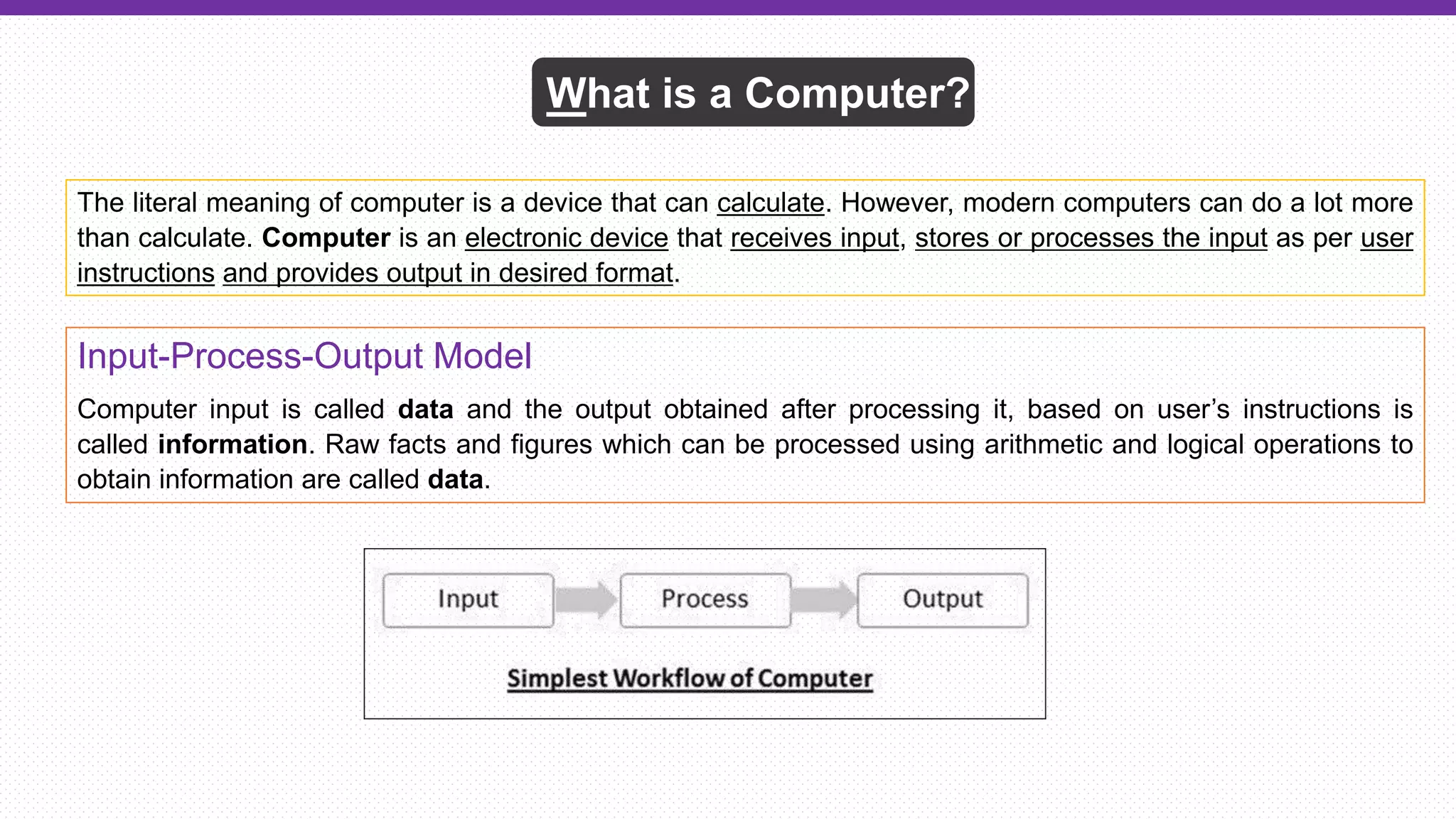1. The document provides information about the basic parts and workings of a computer. It describes the central processing unit, memory, input and output units, and how data is processed.
2. Memory is divided into primary and secondary memory. Primary memory includes RAM and ROM and is used for short-term storage, while secondary memory such as hard disks are used for long-term and permanent storage.
3. The document also discusses computer ports, expansion slots, and memory measurement standards like bytes, kilobytes, megabytes etc. It provides details on memory types like RAM, ROM, cache memory and their characteristics.






































